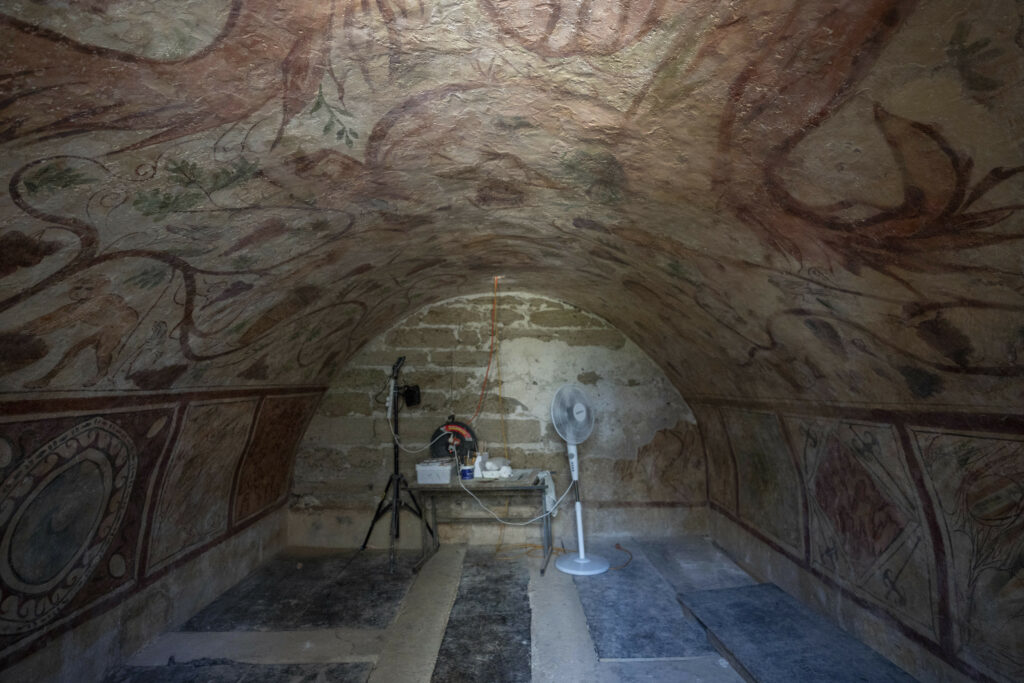Two nearly 2,000-year-old tombs with magnificent wall paintings will be open to the public for the first time in southern Israel after a painstaking conservation process, the Israel Antiquities Authority announced on Tuesday.
British archaeologists first discovered the sand-filled tombs in the 1930s, awed by the colorful paintings on the wall depicting vibrant grape vines twining their way around birds, animals, and mythological characters.
But for nearly a century, the site was dormant and closed to the public to protect the paintings. As new apartment buildings sprouted around the area, the city decided to turn the site into an educational park and renovate the tombs to allow public visits.
“This tomb has wonderful paintings that were preserved remarkably well, and that’s surprising considering that the time that has passed and the location next to the sea, the humidity, the sand, the winds, everything affects the plaster and the paintings,” said Anat Rasiuk, an archaeologist with the Antiquities Authority.
The tombs, located a few hundred meters from the beach, were likely the burial place for aristocratic Romans some 1,700 years ago, when Ashkelon was a Roman city, according to archaeologists.
The vibrant paintings, which stretch across the vaulted ceiling and include intricate designs across the walls, show nymphs with lotus plant wreaths, birds, deer, children picking bunches of grapes, a figure playing Pan’s flute, and figures from Greek mythology such as Demeter, the goddess of the earth and grain, and the head of Medusa, with her hair made of snakes, that were also adopted by Roman mythology.
During the conservation process, experts removed some of the plaster paintings from the wall for off-site restoration. Others were cleaned or enhanced with pigments that mimic the ancient paint.
Another similar 2nd-century tomb, also featuring colorful wall paintings, was relocated to the new park from another location in Ashkelon to preserve it. The second tomb was discovered in the 1990s. Both will be open to the public inside the new park during the upcoming Sukkot holiday in October.
The park includes several archaeological discoveries from across the city, including ancient sarcophaguses, wine presses and olive presses, surrounded by soaring new apartment buildings.
Ashkelon, which is located around 10 kilometers (6 miles) north of the Gaza Strip, has a rich history of archaeology. In addition to the Romans, the city was also home to Philistines during the early Iron Age, around 3,000 years ago. Ancient cemeteries uncovered in Ashkelon have provided important DNA clues that showed Philistines may have migrated to the region from Europe more than 4,000 years ago, a historical conundrum that has vexed archaeologists for decades.
The Israeli city experienced heavy rockets in the early days of the war in Gaza. In May, some of the vessels involved in building the U.S.-built pier in Gaza, which ultimately failed, beached on the Ashkelon coast during bad weather.



No comments:
Post a Comment